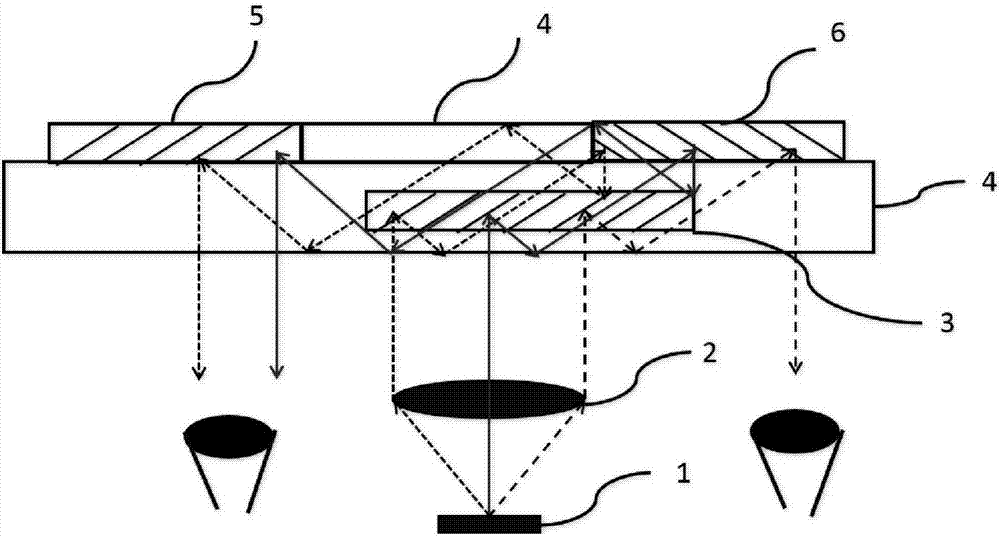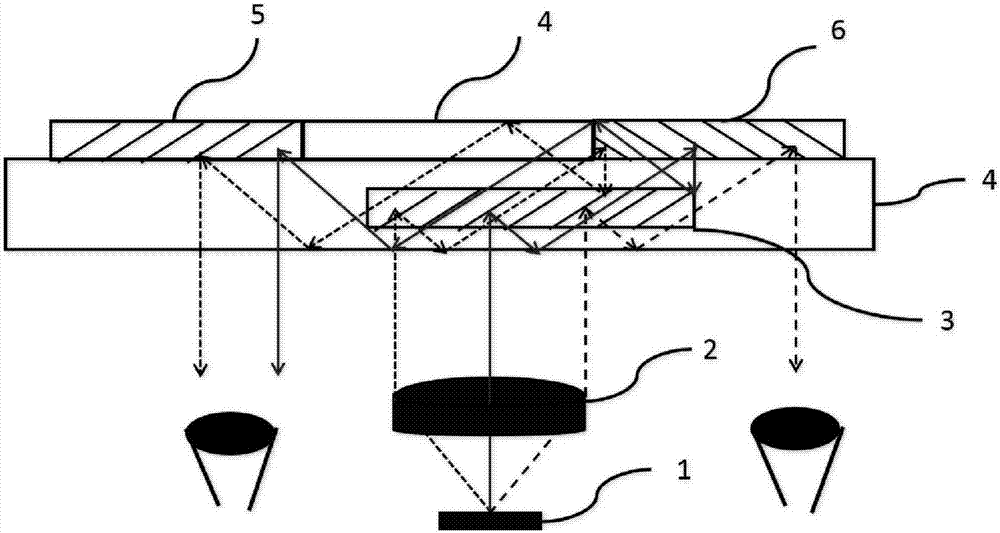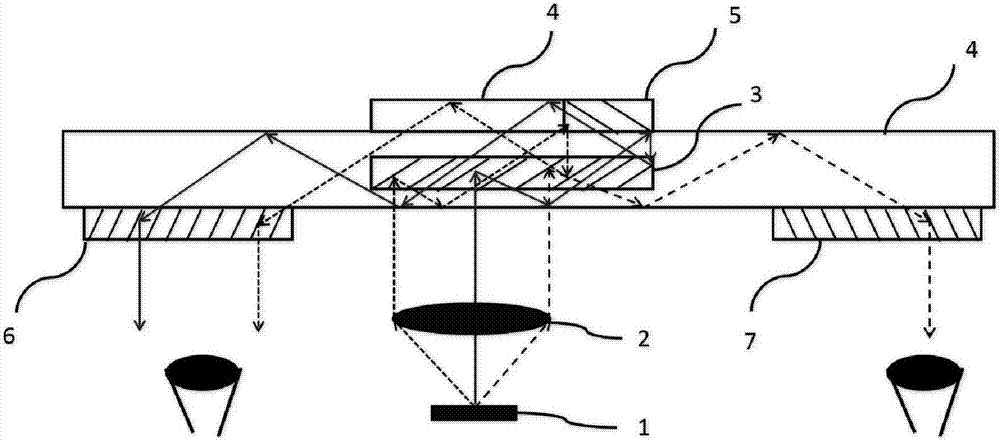Near-to-eye binocular display device
A display device and binocular technology, applied in optical components, optics, instruments, etc., to achieve the effect of large exit pupil near-eye binocular display
- Summary
- Abstract
- Description
- Claims
- Application Information
AI Technical Summary
Problems solved by technology
Method used
Image
Examples
Embodiment 1
[0038] In embodiment 1, such as figure 2 As shown, the microdisplay 1 is used to emit a light beam containing two-dimensional image information, the light beam has a certain divergence angle, and becomes a parallel light beam after being collimated by the doublet lens 2, and the parallel light beam enters the waveguide 4 inside The reflective holographic grating 3 at the input end is coupled into the waveguide 4 for total reflection, and reaches the reflective holographic grating 5 at the output end. Part of the light undergoes Bragg diffraction and is coupled into the right eye of the observer; the other part of the light is diffracted and returns to the reflective input end. The holographic grating 3 undergoes the second Bragg diffraction, and the light beam propagates through total reflection to the left in the waveguide 4, and finally reaches the output holographic grating 6 located on the upper surface of the waveguide 4, and the output holographic grating 6 diffracts the...
Embodiment 2
[0039] In embodiment 2, such as image 3 As shown, the microdisplay 1 is used to emit light beams containing two-dimensional image information. The light beams have a certain divergence angle and become parallel light beams after being collimated by the collimating lens group 2. The parallel light beams enter the waveguide 4 Inside the input end reflective holographic grating 3, a part of the light is coupled into the waveguide 4 for two total reflections, and reaches the output end holographic grating 6 located on the lower surface of the waveguide 4 to undergo Bragg diffraction, and the holographic grating 7 couples the light beam into the observer Right eye; another part of the light undergoes a total reflection in the waveguide 4, reaches the input end reflective holographic grating 5 located on the upper surface of the waveguide, and is diffracted back to the input end reflective holographic grating 3 for the second Bragg diffraction. Total reflection propagates to the le...
Embodiment 3
[0040] In embodiment 3, such as Figure 4 As shown, the input holographic grating 3 is a transmission holographic grating located on the lower surface of the input end of the waveguide 4 , and the input holographic grating 5 is a reflective holographic grating located inside the input end of the waveguide 4 . Both the output holographic grating 6 and the holographic grating 7 are transmission holographic gratings, which are located on the lower surface of the output end of the waveguide 4 .
[0041] The working principle in embodiment 3 is the same as that in embodiment 1 and embodiment 2, so it will not be repeated here.
[0042] The near-eye binocular display device of the above embodiment has the effect of single input and double output.
[0043] In the above embodiments, the reflective or transmissive holographic grating is not fixed, which needs to be determined in conjunction with the position of the microdisplay 1 and the holographic grating in the waveguide.
PUM
| Property | Measurement | Unit |
|---|---|---|
| Thickness | aaaaa | aaaaa |
| Thickness | aaaaa | aaaaa |
Abstract
Description
Claims
Application Information
 Login to View More
Login to View More - R&D
- Intellectual Property
- Life Sciences
- Materials
- Tech Scout
- Unparalleled Data Quality
- Higher Quality Content
- 60% Fewer Hallucinations
Browse by: Latest US Patents, China's latest patents, Technical Efficacy Thesaurus, Application Domain, Technology Topic, Popular Technical Reports.
© 2025 PatSnap. All rights reserved.Legal|Privacy policy|Modern Slavery Act Transparency Statement|Sitemap|About US| Contact US: help@patsnap.com



